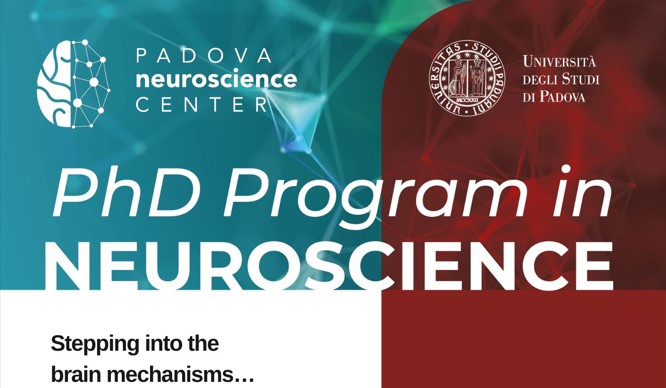Lack of Williams syndrome-associated genes alters quantity discrimination in zebrafish
Monoclonal antibodies for early Alzheimer disease: a long road to discovery and marketing approval, a short timeline for health systems to organise services
Italian intersocietal recommendations for restructuring the diagnostic-therapeutic pathway for the implementation and appropriate use of anti-amyloid monoclonal antibodies in Alzheimer’s disease
Quantification of plasma APOE4 with a novel automated Lumipulse immunoassay enables the identification of homozygous and heterozygous APOE ε4 carrier status
Unguided self-help to bridge waiting time for face-to-face therapy in a university student mental health service: interrupted time series analysis
Linking dynamic connectivity states to cognitive decline and anatomical changes in Alzheimer’s disease
More than a symptom: qualitative exploration of embodied control and restlessness in compulsive movement in eating disorders
Emotional intelligence and loneliness in eating disorders: a cluster-analytic study across diagnostic categories
Bifurcations and phase transitions in the origins of life
Infusion therapies for Parkinson’s disease: where are we in 2025?
Unraveling the role of GBA1 genotype in axial signs response to subthalamic deep brain stimulation
Long-Term Motor and Cognitive Outcome of Deep Brain Stimulation in Patients With Parkinson Disease With a GBA1 Pathogenic Variant
Spontaneous activity of astrocytes is a stochastic functional signal for memory consolidation
Intermediate endophenotypes and epigenetic mechanisms of psychiatric disorders
Depth-resolved fiber photometry of amyloid plaque signals in freely behaving Alzheimer’s disease mice
Do newborns detect prosodic violations in an unfamiliar language at birth?
Visual enumeration remains challenging for multimodal generative AI
Reply: “PGRN Manifesting as Parkinson’s Disease: Counseling and Treatment Implications”
In the Words of Others: ERP Evidence of Speaker-Specific Phonological Prediction
The Impact of Auditory Distraction on Visual Memory Encoding in Middle-aged and Older Adults: A High-density Electroencephalography Study
Reply: Reflections on the cognitive training of immersive virtual reality in executive function and prospective memory for PD-MCI patients and healthy older adults
Reply: Immersive virtual reality for cognitive training in Parkinson’s disease – Future directions and neuroimaging perspectives
Cognitive outcomes of infusion therapies in Parkinson’s disease: A comprehensive systematic review
Microstructural alterations of the corpus callosum in affective and non-affective early psychosis: A diffusion magnetic resonance imaging study
Behavioral Clusters and Lesion Distributions in Ischemic Stroke, Based on NIHSS Similarity Network
A Journey between Neurons and Astrocytes: A Tribute to Giorgio Carmignoto
A quasi-randomised pilot study on the efficacy and perceived usefulness of adding chemosignals to mindfulness practice for women with social anxiety
Switching patterns of cortical-subcortical interaction in the human brain
How spontaneous brain activity encodes the observation of grasping movements
Restoration of myogenesis in ALS-myocytes through miR-26a-5p-mediated Smad4 inhibition and its impact on motor neuron development
Dynamic topographies of intrinsic neural timescales: a key role for consciousness
The role of data partitioning on the performance of EEG-based deep learning models in supervised cross-subject analysis: A preliminary study
Bipartite Genetically Encoded Biosensors to Sense Calcium Ion Dynamics at Membrane-Membrane Contact Sites
Comment by European Alzheimer’s Disease Consortium (EADC) investigators on the negative recommendation of the CHMP on the marketing authorization of donanemab for early Alzheimer’ s disease
Ca(2+) Fluxes across Membrane Contact Sites
BDH2-driven lysosome-to-mitochondria iron transfer shapes ferroptosis vulnerability of the melanoma cell states
Regorafenib versus local standard of care in patients with grade 2-3 meningioma no longer eligible for loco-regional treatments: a phase II randomized controlled trial (the MIRAGE study)
Frontotemporal dementia with C9orf72 mutation presenting with bizarre psychosis and right flail leg syndrome
In the heart of time: investigating the link between cardiac activity and interoception in explicit and implicit timing
Metacontrast masking of symmetric stimuli
Empathy, psychopathology and suicidal behavior: a case-control study
Recent Insights on Supraspinal Astrocytes in Chronic Pain
xEEGNet: towards explainable AI in EEG dementia classification
The Hidden Spectrum Within Eating Disorders: Clustering Neurodivergent Traits and Sensory Sensitivity
Publisher Correction: fNIRS reproducibility varies with data quality, analysis pipelines, and researcher experience
fNIRS reproducibility varies with data quality, analysis pipelines, and researcher experience
Navigating the therapeutic landscape in advanced Parkinson’s disease: a comprehensive review from infusion therapies to stem cells
Molecular-Informed Network Analysis Unveils Fatigue-Related Functional Connectivity in Parkinson’s Disease
Pathophysiological Role of Primary Motor Cortex in Essential Tremor
Electrophysiological changes in the acute phase after deep brain stimulation surgery
Imaging the developing brain with near-infrared spectroscopy in cochlear implanted children
Two-photon (2P) Microscopy to Study Ca(2+) Signaling in Astrocytes From Acute Brain Slices
Under-Interpretation of Neuroimaging Data in Insanity Assessment: A Hidden Risk
Towards a new Value-based scenario for the management of dementia in Italy: a SINdem delphi consensus study
Ethnographic evaluation of usability, understandability, and acceptance of the MY PDCARE digital tool to facilitate Parkinson’s disease symptom tracking and patients’ and care partners’ communications with the treating healthcare professional: the SELF-AWARE study
Progranulin Mutation Manifesting as Parkinson Disease: A Case Series from the PADUA-CESNE Cohort
Unveiling the neural correlates of prospective memory: An ecological EEG study
Spatial regularities in a closed-loop audiovisual search task bias subsequent free-viewing behavior
The role of blood-based biomarkers in Parkinsonian disorders, Alzheimer’s disease and frontotemporal dementia
The Impact of Negative Social Feedback on Wanting and Liking of Food Pictures in Anorexia Nervosa
Examining the Effects of Ostracism and Overinclusion in the Eating Disorder Binge Spectrum: Evidence From a Controlled Cyberball Task
Climate change, air pollution, and schizophrenia: Moving the field forward
The impact of COVID-19 on parents from Black ethnic backgrounds in the UK: what we have learned and why it still matters
Transcranial alternating current stimulation selectively modulates aperiodic EEG component: Unveiling alternative mechanisms of modulation
Adverse childhood experiences and internalizing symptoms: the moderating role of neural responses to threat
Keep boosting insight into the role of the primary motor cortex in Parkinson’s disease pathophysiology
Lizards and tortoises show evidence of low inhibitory control
The role of syllabic rhythm in speech perception across languages
Attitudes Toward the Use of Conditional Automated Vehicles in the Technology Acceptance Model Framework: Evidence from an Italian Sample
The association between C-reactive protein and neuroimaging findings in mood disorders: A review of structural and diffusion MRI studies
The role of data partitioning on the performance of EEG-based deep learning models in supervised cross-subject analysis: A preliminary study
Functional connectivity of the striatum in psychosis: Meta-analysis of functional magnetic resonance imaging studies and replication on an independent sample
Oxytocin seals the blood-brain barrier, improving 22q11.2 deletion syndrome trajectories
Spontaneous Dynamics Predict the Effects of Targeted Intervention in Hippocampal Neuronal Cultures
Comment by European Alzheimer’s Disease Consortium (EADC) investigators on the negative recommendation of the CHMP on the marketing authorization of donanemab for early Alzheimer’ s disease
Optimal information gain at the onset of habituation to repeated stimuli
The OPM-MEG system: Neuroimaging research is moving forward
We are thrilled to announce that the components of the OPM-MEG (Optically Pumped Magnetometer – Magnetoencephalography) system have arrived. The Cerca Magnetics team is installing the system in full swing, and they are doing a great job.
This facility will be the first of its kind in Italy, representing a giant leap forward for neuroimaging research and non-invasive technology for real-time brain imaging.
MEG systems measure magnetic fields generated by current flow in groups of neurons in the brain, in order to construct images showing moment-to-moment changes in brain activity. However, the OPM-MEG system is expected to outperform conventional MEG systems, because:
- It is worn like a helmet and adapts to any head size.
- Participants can move around quite freely during a scan. This means that unintentional movements will not affect the acquired data.
- It is more sensitive and has better spatial precision.
The OPM-MEG system is funded by the European Union – NextGenerationEU – through MUR PNRR funding in the framework of the PNRR project IR00011 – EBRAINS-Italy “European Brain ReseArch INfrastructureS-Italy” (EBRAINS-Italy), Missione 4, “Istruzione e Ricerca” – Componente 2, “Dalla ricerca all’impresa” – Linea di investimento 3.1 del PNRR, Azione 3.1.1 “Creazione di nuove IR o potenziamento di quelle esistenti che concorrono agli obiettivi di Eccellenza Scientifica di Horizon Europe e costituzione di reti” – Area ESFRI H&F, CUP: B51E22000150006.
More information will be provided soon through LinkedIn.
![]()
Summer call for the PhD course in Neuroscience (41st Cohort)
The summer call for applying for the PhD course in Neuroscience runs from July 21, 2025, to August 26, 2025, 1:00 pm CEST.
Continue reading

